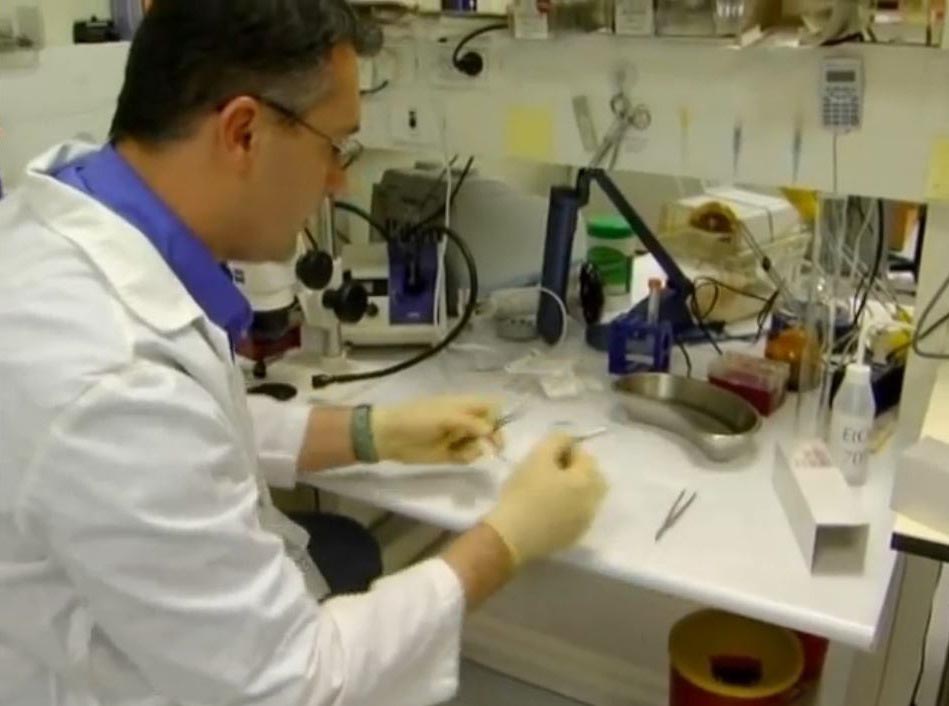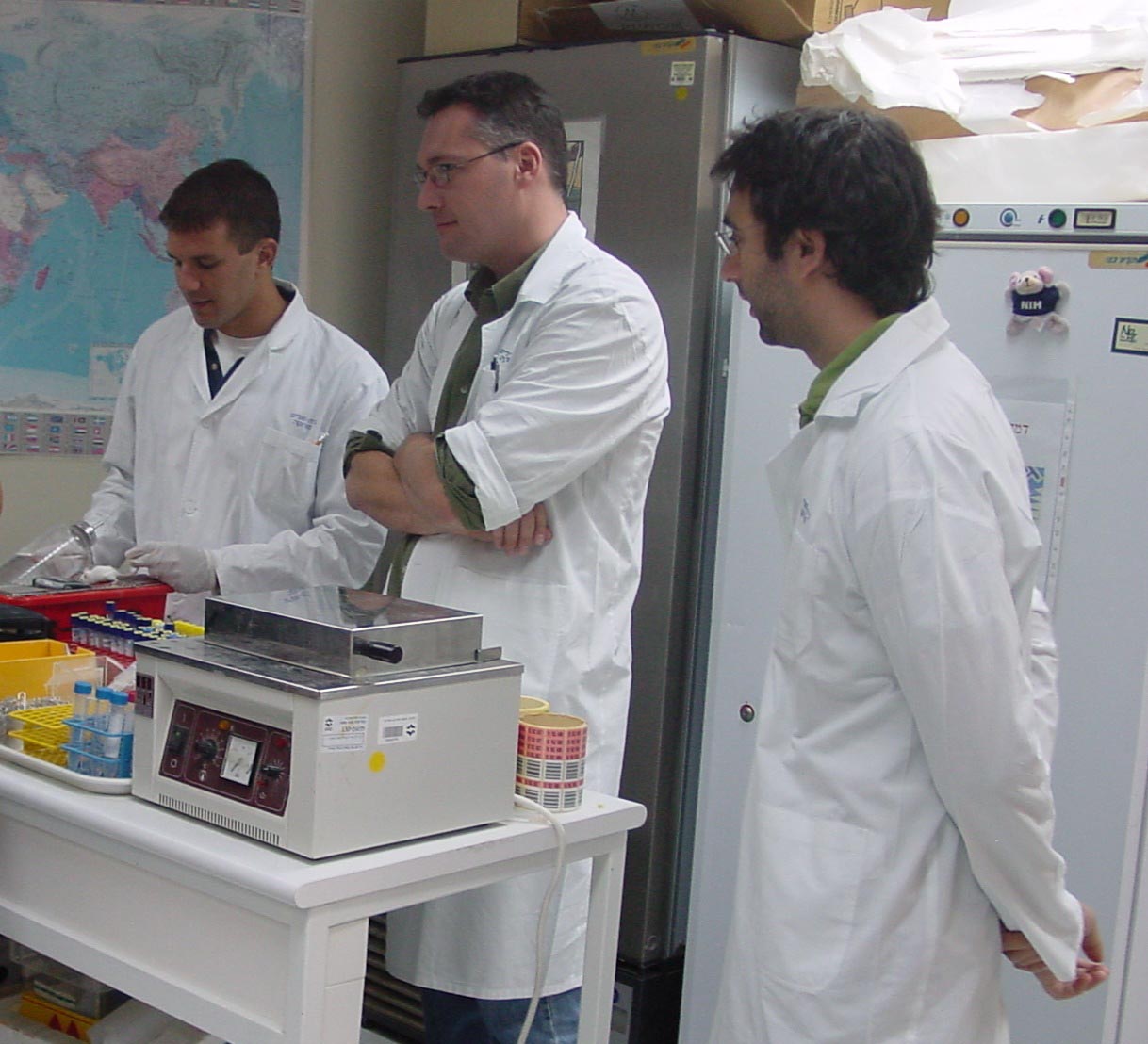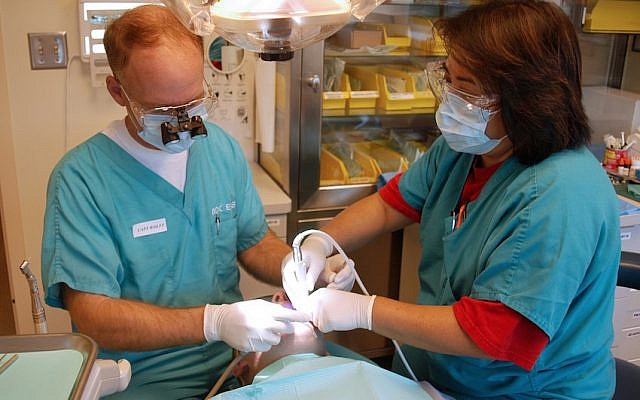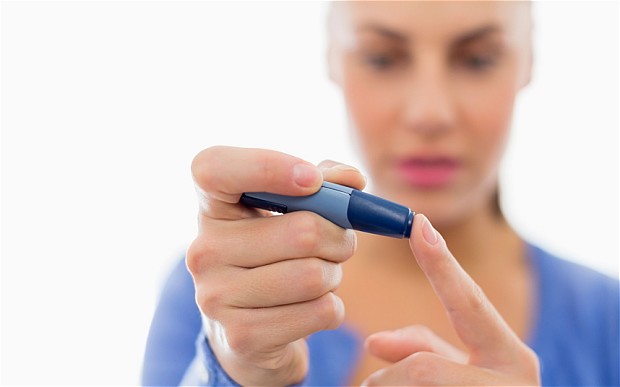
A Quest to Cure Diabetes
January 15, 2016
Recently, Marika Sboros of BizNews interviewed Prof. Eli Lewis, Ph.D., an educator and expert of clinical biochemistry and pharmacology in BGU’s Faculty of Health Sciences. Prof. Lewis describes how he is closer than ever to finding one of medicines most elusive holy grails: an effective cure for type 1 diabetes. Here is the interview, reprinted in full.
Sboros: Prof. Lewis, first of all tell me, what’s a clinical islet?
Lewis: Islets are these little tiny spheres that you have in your pancreas making insulin.
Sboros: I remember in biology at school learning about islets of Langerhans?
Lewis: Those are the ones. Every person has in his or her pancreas one million of these spheres, one million islets. In them, most of the cells are beta cells that make insulin. It’s the only hormone that is able to lower glucose in the blood, the only cells that make it, and it’s the only location where they are placed.
So it’s a very dangerous entity when you consider that if you lose the beta cells for any reason, glucose will rise in the blood. It will just rise in the blood, that’s how it goes, there’s no way to pull it down, there’s no other hormone.
Sboros: Are we talking now about type 1 diabetes?
Lewis: The state of it is changing a bit: Type 1 diabetes has been renamed type 1 auto immune diabetes to be more precise. It is an auto immune condition [because] you literally see in the blood circulating antibodies against the islets, against insulin. So it’s an auto immune condition. It used to be called juvenile diabetes, but we actually see it today also in adults and later on, so it’s no longer juvenile.
Sboros: So you mean type 1 diabetes can be diagnosed at any age?
Lewis: Different ages. In some cases, after 30 years. The trigger can be one of many. We still don’t know what exactly instigates the actual condition, but it’s no longer reserved only for kids.
Sboros: In type 1 diabetes, the pancreas does not make any insulin at all?
Lewis: That is what we call the end point of the disease, as if there is no next step for it. You basically lose a mass of viable cells.
For treatment, what patients have today, what caregivers have to offer is insulin. It’s basically that component that’s missing in the circulating blood. The therapy is roughly 100 years old. Unfortunately, since its discovery, insulin in different forms — although there are different ways of introduction in actually fascinating technology advancements — it is still basically insulin. It is very difficult for us to manually know how much insulin you need at every moment, but it is helping the condition, it is treating the patients.
But what about the cells that have expired – that’s something that is not addressed today. What my work has been trying to do over the past 10 years is to deal not with levels of insulin which can always be introduced, but with the actual disease, the death of the islets or their absence or their function. Those are things I’m trying to alter.
Sboros: You are trying to do that firstly with this new drug – Alpha-1 antitrypsin (A1AT, aka AAT or alpha 1) – is it a drug? In your research you say it’s a natural compound that occurs in the body.
Lewis: Precisely. It’s a molecule, a protein. Every one of us makes this protein, you and I.
Sboros: And people with type 1 diabetes?
Lewis: Actually yes, they also make it, but there’s a point I’ll get back to in a second. We all make AAT in the bloodstream all the time. When we are sick, we make more of it. What do I mean “sick”? If you have flu, an infection, you feel horrible, inflamed, and the body makes more AAT in the blood. That has been known for decades. People have been measuring it. Doctors have used that level of higher AAT as if it is a marker of whether or not there was an actual infection or disease.
But if you study it deeply enough as I have done for the past 10 years, it turns out it actually has a function, and it turns out that the body doesn’t just release it and increase the levels when we are sick. It does so on purpose, appropriately so.
It’s one of a series of molecules we use to protect our tissues. Why do we need to protect our tissues when we are sick? Because the involvement of the immune system in correcting an infection, in clearing or decontaminating it, is very drastic. Our cells are very sensitive. The immune system has to use that platform of innocent, sensitive tissue to destroy bacteria, viruses, fungi, parasites, cancer cells, dead tissue.
It’s a very drastic event, and while it happens, you want it to execute its full ability to decontaminate the area, but meanwhile the tissue suffers, actually endures a lot of inflammation, injury. It’s not the best way to go through illness.
At the point when AAT rises in the blood, it circulates in the body systemically, it reaches everywhere; some tissues – like the lungs and gut – make the molecule for their own sake. It helps to facilitate closing these micro wounds. It speeds up the wound healing process. It is anti-inflammatory, so it downplays inflammation.
It allows inflammation to exist, but at a very low level. And when you are sick, your body enjoys this extra protection around the areas that are experiencing the immune event.
Sboros: So what does this have to do with type 1 diabetes?
Lewis: AAT has a very close relationship with diabetes. It turns out that circulating glucose levels, when they are high, actually stick to proteins. Some of your listeners may know about the measurement HbA1C – Hb for hemoglobin, A for adult, and 1C means it is coated with glucose. It’s actually stuck to glucose.
Everything in the blood gets coated with glucose in diabetes, both type 1 and type 2 diseases. When it is coated with glucose, even albumen gets coated with glucose, everything you put in a glassful of glucose over time will be coated. You don’t need enzymes to do that.
For AAT, this means it becomes inactivated. It has been shown for the past almost 20 years that levels of AAT the body makes become inactivated in diabetics; it’s not functioning.
In clinical trials we have been trying to see if AAT infusion may alter the disease. The first thing we found [with patients] was when they came in, they had an inactive form of AAT.
Sboros: The form of AAT you are giving type 1 diabetics via transfusion – is it natural or synthetic? It would have to be what you call exogenous?
Lewis: Exogenous, but luckily it is purified from plasma. So we are basically introducing the native molecule that is in the plasma.
Apparently the companies that work with blood products share – I learned this recently – 50,000 liters of plasma globally. They extract human albumen, human antibodies for medical purposes, and AAT enjoys this extraction. It is purified and bottled up, and the reason they do that has nothing to do with diabetes.
We came very late with the concept we have [on AAT for type 1 diabetes], before we knew about the advance [for its use] in another disease.
Sboros: Which disease is that?
Lewis: It’s called A1AT deficiency. It has been with us for quite a while. Medical textbooks will have half a page on it, showing that if you have less than normal AAT genetically, it turns out that it is slightly mutated, so instead of being produced and released into the blood, it is just produced and stuck in the cells.
For those individuals, that doesn’t change much until they develop lung emphysema – the breakdown of the lung walls. Also they endure more inflammatory bouts, vasculitis (inflammation of blood vessels), and things like that, from having lower levels of AAT.
Sboros: So AAT can be used to treat emphysema?
Lewis: At present, that’s almost the only indication. But we feel lucky because for the past 30 years it has been bottled up on the shelf exactly for this rare condition – around one in 10,000 individuals roughly will be diagnosed with A1AT deficiency. They are eligible for AAT infusions.
For us, it’s wonderful, when you consider that we have a drug or regimen to give to people, including children, and who knows maybe for life, you are not sure. Ten years ago we decided to adhere completely to testing on safety and feasibility of a drug that is identified already as usable and clinically safe.
Sboros: How long would it take to reverse type 1 diabetes using this drug?
Lewis: We have a lot more experience now than we had before. At the time we started testing AAT infusions in patients, it took a very long while to identify the window of opportunity. We had no idea how long we would need to administer the infusion. In pre-clinical studies, in the early years of intensive experiments in animal studies, we discovered that it takes a few weeks at least for the immune system to alter for the better. It can’t be done overnight, or a week or two. It needs four weeks at least in mice and rat models.
Sboros: But if it’s animal studies, particularly in rodents, you can’t necessarily generalize to humans.
Lewis: Oh, completely.
Sboros: Will you be doing human trials soon?
Lewis: Oh yes, the next trial is running already – one at Ben-Gurion University, two others currently recruiting in the States. We have several teams working on it.
Sboros: This is really revolutionary! Is your hypothesis that this will be a long-term cure, or you don’t know that at this stage?
Lewis: We don’t know exactly. The longest we have followed a patient that has been treated for a while with AAT is eight years. After eight years, that child still has no need for insulin. He is still making his own after eight weeks of infusions.
But that said, we still have to find the best window of opportunity for each patient. We are not sure. We are thinking that it is very close to time of diagnosis, so that really doesn’t help those who are years down the line with the disease.
All clinical trials will usually always recruit individuals who are soon after diagnosis, as that is the dynamic point of the disease. One clinical study of 59 patients showed they all started to make their own insulin after receiving 37 weeks of A1AT, so it could be that the longer the better. But we never knew at the time, so we could afford to try it for a few weeks and then stop.
But also, every type 1 diabetic is slightly different. It depends on what age the patient gets it, the age of onset, the patient’s background, level of antibodies that goes up and down, other diseases that may be present. So we don’t think we can find a uniform, mass treatment. Type 1 diabetes is a disease that deserves to be individualized.
Sboros: Yes, personalized medicine is proving to be the way to go, and also I presume, supported by lifestyle change?
Lewis: That is always in the background – one of things that I strongly support. I turn to parents all the time, and say they actually have a lot more information than all the medical groups put together. When parents have a child who is type 1 diabetic and the years go by, they individually calibrate what’s good for the kid, what’s not good for the kid, what aggravates the condition and what fits well. They know best.
There are no two kids who get the same diet, but the longer the parents follow what works, the better they fit the diet to their kids, and when the kids grow up they follow this on their own. They are very responsible individuals, very aware of themselves.
Sboros: Do you have any thoughts on the role of carbohydrates in the diet for diabetics?
Lewis: Oh yes, completely! In diabetes, the pancreas in this disease is suffering an attack, an assault; the pancreas is injured. These spherical entities, these islets, are actually destroyed by high levels of glucose. They are sensitive in ways that means they can actually expire if someone has a lot of glucose.
Carbohydrates – consider them macromolecules with a lot of sugar – actually load a burden on anyone, but especially someone with type 1 diabetes. Carbohydrates force the pancreas to work harder. I will never say something like reduce [carbohydrates] to zero percent. We have never been designed to survive on earth with diets that contain the number zero percent. But moderation and common sense. It make intuitive sense to keep carbohydrates down.
Sboros: Can AAT treatment help type 2 diabetics as well?
Lewis: Great point! First of all, you have to consider that what we hit upon here, this molecule, and shedding light on a particular juncture in immunology, is not necessarily completely restricted to type 1 diabetes. That’s because there is an interface where inflammation, immune cells and suffering cells meet. AAT disengages some of those vicious cycles that tend to aggravate themselves.
First of all we have to consider other immune conditions. There is some evidence that AAT infusion can help to deviate the course of multiple sclerosis (MS). That’s exciting, as my mother suffered from MS. It was from a pre-clinical study done between our group at BGU and [scientists] in Portland, Oregon. Can I take half a minute here to tell you what it means to be a researcher?
Sboros: Please do!
Lewis: We shipped over these special animals that make human antitrypsin to Portland for them to study MS, because that’s their specialty. I work on diabetes, they work on MS.
The first phone call we got was two days after the beginning of the experiment and they said: “It’s such a shame, we had so much invested in shipping the mice and coordinating [the trial], but you should know they all got MS, they all entered the disease just the same way as the others.” That was disappointing, but you live through it.
After two days they called us again: “Professor Lewis, they’re all recovered, and the other mice continued to get paralysis and died.” I still get chills thinking about it. The disease did have one step forward to act in those other mice, but having so much AAT, it regressed.
That’s what we actually think the body is doing when it normally makes more AAT: it is part of the speeding up of wound healing when there is an event.
It’s really hard for me to give seminars to clinicians on this subject, especially. There are no side effects to this molecule at the range we are considering, and at the duration, definitely.
People until now have taken (AAT) for life and at higher doses. For diabetes, we mimic those doses and limit treatment for several weeks. Safety is no issue, absolutely. In fact, even the FDA immediately approved phase 2 trials of AAT in patients. There was no need for toxicology trials, because everyone knows if a healthy person gets it, nothing bad happens.
That’s impressive, but clinicians find it hard to accept. It is hard to accept, I agree. You would want to know what happens long term, after many years. Well, these patients have been followed for 13 years, 25 years on A1AT infusions. That’s very long term for weekly infusions.
And we do know that patients have lower infection rates and lower cancer rates than normal populations. Because they are being treated all the time with A1AT, their bodies are basically submerged in this mode where their immune system is functioning but their tissues are protected. That mode is very precious.
Sboros: So this is one of the holy grails of modern medicine – a cure for diabetes, but not only for type 1 diabetes, as it has many other applications?
Lewis: You mention type 2 diabetes. When it is diagnosed, it is in many ways worse than type 1, because the patient has probably had type 2 diabetes for more than 10 years.
Type 2 diabetes is heavily underdiagnosed, and goes undetected for a very long time. Usually if you ask type 2 diabetics what happened that they were diagnosed, it could have been a routine checkup at work, and suddenly their glucose levels were very high. All that time A1AT is neutralized, inactivated, hard to control, in people whose lifestyle is pretty much fixed.





